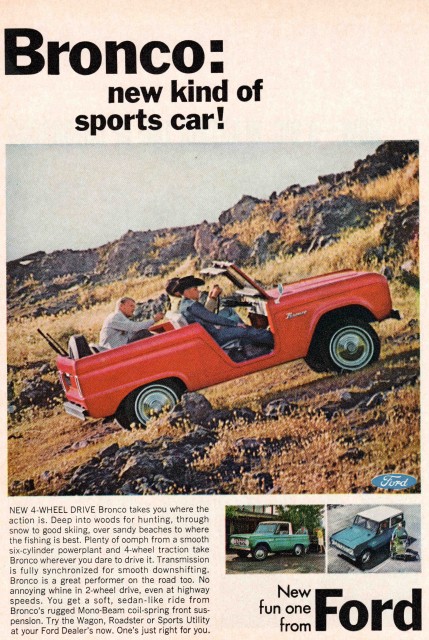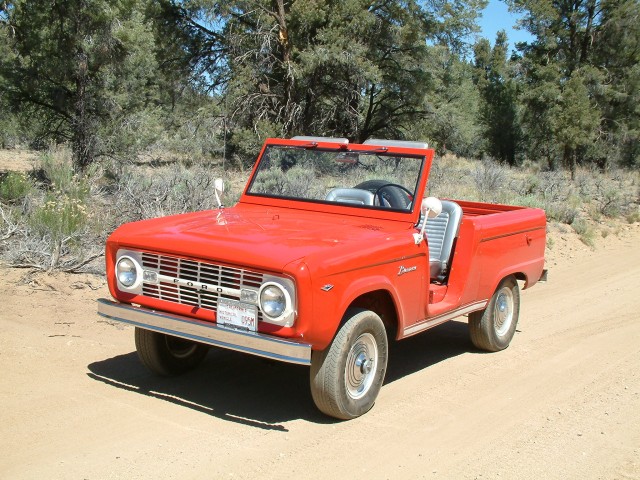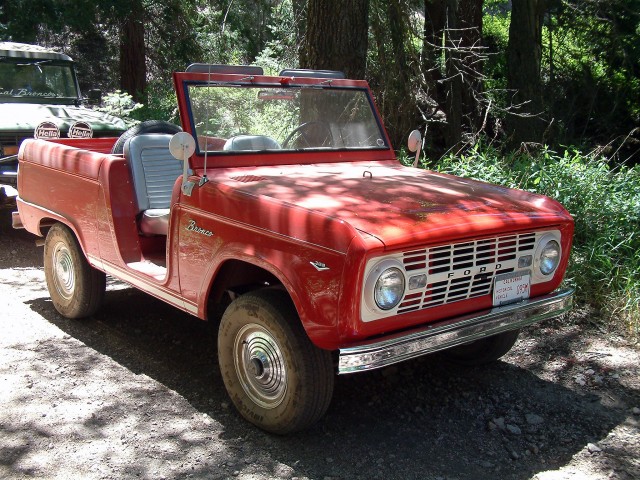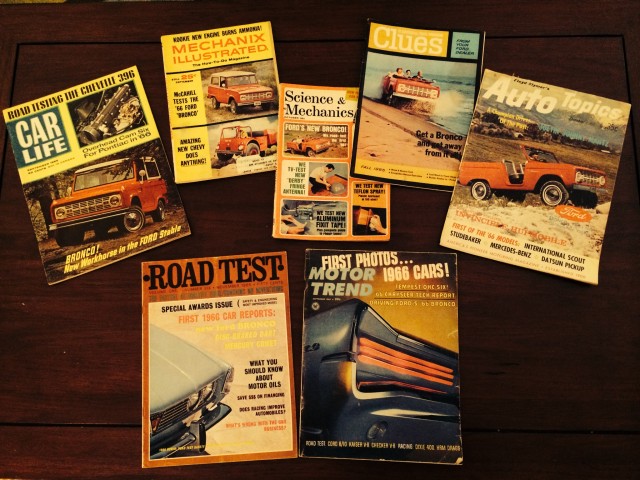It was August 1965 and times at the Ford Motor Company were good. Their car lines were selling well – particularly their popular pony car, the Mustang, which had been introduced just over a year earlier to an enthusiastic public reception. On the heels of these successes, Ford introduced the Bronco lineup to a vehicle segment on the verge of explosive growth: sport utility vehicles. As Ford General Manager Donald Frey noted at the time, “In short we wanted a new “in” car to add to our “horse” stall.”
The small utility vehicle market, as it was then known, was a sparse field when the Bronco was introduced. Annual sales had leveled off at about 40,000 vehicles a year with Jeeps and Scouts comprising the majority of those sales. Foreign entries totaled about 6,000 vehicles/year.
In the early 1960s, Ford began conducting extensive research among potential purchasers and noted that consumers were interested in vehicles with higher highway cruising speeds, improved ride, weather-tight cabs, more comfortable seats, readily available parts and service, and excellent off road performance.
All of these goals were on the engineers’ minds as the Bronco went through the design process. By early 1964, chassis layouts were completed and feasibility studies of the new coil spring front suspension had been approved. On Feb. 12, the styling model was approved by senior management and $10 million was allocated for development and production.
When it was introduced, the Bronco was available in three body styles: Roadster, Sports Utility, and Wagon. The roadster, with its fiberglass inserts in the door openings and usually lacking a top, seemed to be the most direct competitor to Jeep’s CJ-5. The Sports Utility had a small hardtop that made it into a small pickup – today it’s commonly known as a ‘halfcab’. The wagon, featuring a full-length, removal hardtop, proved to be the most practical and most popular body style with customers. Ford stressed the Bronco’s versatility in its advertising and as Donald Frey noted at its introduction, “It has been designed to go nearly anywhere and do nearly anything.”
Although the Bronco had its own unique body, Ford did dip into the corporate parts bin to save costs wherever possible. The 170 ci 6 cylinder engine was borrowed from the Falcon with a special oil pan, fuel pump, and carburetor modified for off road travel added for use in the Bronco. Optional front bucket seats came from the Mustang and further review revealed many other small items re-used from elsewhere in the Ford line. The popular 289 V8 from the Ford cars became available in March 1966.
The Bronco was built on a similar wheelbase to the Jeep CJ-5 and Scout 80, but one of Ford’s major differentiators of their new machine was a claimed better ride thanks to the coil spring front suspension. The Bronco’s front axle was located by forged radius arms for fore/aft placement and a track bar for lateral location. The coil spring suspension also afforded a much tighter turning radius than their leaf sprung competitors. Magazine reviews at the time gave high praise for Bronco’s ride and handling.
Ford offered a healthy list of options for the Bronco including the rare combination of front and rear axles with limited slip differentials. Heavy duty GVW options, heavy duty cooling systems, auxiliary fuel tank, free running front hubs, and chrome bumpers were all popular. Your friendly local Ford dealer would also install a snow plow, winch, tachometer, front air bags, trailer hitch, CB, tow hooks, and many other items on the option list if desired.
Consumers responded with sales of almost 24,000 Broncos in the first year of production. Wagons accounted for slightly more than 50% of production and would gradually become the only option as the years progressed.
In the intervening fifty years, the Bronco has served many roles (including overlander) and gained a wide following in the automotive community as a collectible vehicle. And it all began fifty years ago today on August 11, 1965.












